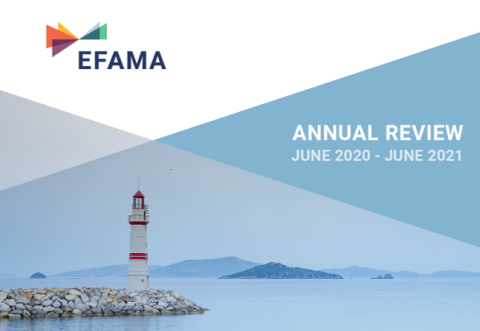EU Fund regulation
The EU fund product landscape is deep, diverse and dynamic. Since the birth of the UCITS framework in 1985, European institutions have progressively refined it into a global “gold standard”, one that successfully balances strict regulatory requirements with the flexibility required by manager to meet evolving client demands. The successful evolution of UCITS was followed by the creation of alternative investment funds (AIFs) under the 2011 AIFM Directive, adding a second important pillar to EU fund/manager regulation. Building on this second pillar are further ambitious EU fund products, such as EUSEFs, EUVECAs and ELTIFs. EFAMA has helped guide all of these key regulatory developments, informing policymakers and regulators on their main merits and drawbacks, while also keeping a close eye on their respective review initiatives.
EFAMA strongly supports a fundamental review to the ELTIF regime, in view of broadening its eligible investment universe and adapting it to better meet retail investor needs. We are also closely monitoring the review of the AIFM Directive from a product regulation standpoint, including possible spillover effects on the UCITS Directive requirements. Further work involves keeping pace with relevant ESMA initiatives, such as the work around the Common Supervisory Action on costs and fees for UCITS.
EFAMA's response to ESMA's CP on Implementing technical Standards under Regulation (EU) 2019/1156
Counterparty and liquidity risks in ETFs - EFAMA response to ECB
Our comment paper confutes the ECB study’s main findings by focusing on its two core areas, namely
liquidity and counterparty risks inherent to the structure and functioning of ETFs. A final section
considers the merits of further regulatory action addressed at the European ETF industry.
EFAMA’s comments on ESMA’s CP on Draft regulatory technical standards under Article 25 of ELTIF Regulation
Monthly Statistics July 2020 | Investors remained confident in investment outlook in July
The European Fund and Asset Management Association (EFAMA) has today published its latest monthly Investment Fund Industry Fact Sheet, which provides net sales data of UCITS and AIFs for July 2020*.
An ambitious CMU Action Plan that will need strong political support from Member States
Building a Capital Markets Union (CMU) that serves the needs of European citizens and businesses is an ambitious yet, essential - project that requires a long-term political vision, determination and perseverance.
The new CMU Action Plan adopted today by the European Commission, which largely builds on the recommendation of the CMU High-Level Forum, is a milestone in the journey towards the realisation of this ambition for Europe.
International Statistics Q2 2020 | Solid growth of worldwide fund assets in second quarter as global financial markets post strong recovery
The European Fund and Asset Management Association (EFAMA), has today published its latest International Statistical Release describing the trends in worldwide investment fund industry in the second quarter of 2020*.
Worldwide regulated open-ended fund assets increased by 9.8 percent to EUR 51.7 trillion in the second quarter of 2020. Worldwide net cash flow to all funds amounted to EUR 818 billion, compared to EUR 617 billion in the first quarter of 2020.
Fund managers retain only 41% of the total cost paid by retail investors | Market Insights | Issue #6
EFAMA has released its latest Market Insights report titled “Perspective on the costs of UCITS”. The full report breaks down the costs of UCITS, focusing on the fees charged for the different services provided along the investment fund value chain and distinguishing between the product cost for which fund managers are directly responsible, and the
3 questions to Miranda Seath on the European fund classification
Q #1 What is the European Fund Classification (EFC) and why is it different from other classifications?
The mission at the heart of our work on the European Fund Classification scheme is to help investors, and the wider European funds industry, to find and compare similar fund peer groups in a meaningful way. This mission is particularly relevant in an era of rising cross-border fund sales because the EFC enables investors and their advisers to compare funds across different European jurisdictions consistently.
EFAMA Annual Review 2020-2021
It gives me great pleasure to provide you with an overview of our activities since our Ordinary General Meeting of last year.



































